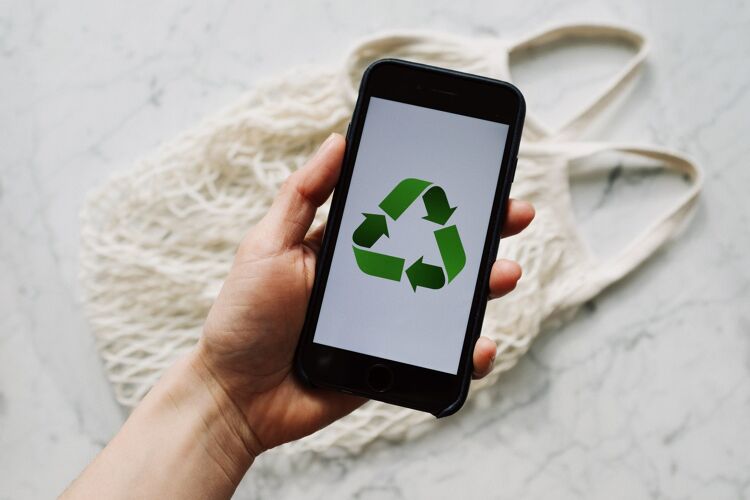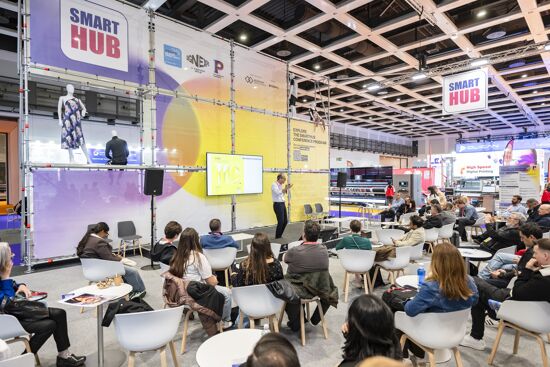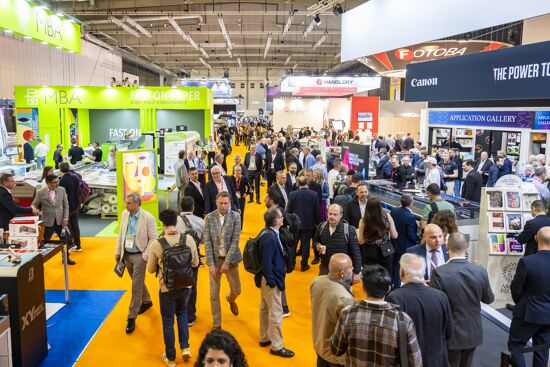Bringing colour back: the need for ‘green’

The theme of this year’s FESPA Global Print Expo is ‘Bringing Colour Back’. After almost 18 months feeling the commercial effects of the pandemic and stuck behind the screen, we aim to bring back colour, energy and positivity, and enable the speciality print community to come together face-to-face.
One colour on every printer’s mind is ‘green’. Simply put, we all need business to be more sustainable. As demand from consumers and brands for more environmentally responsible print increases, there’s pressure on digital wide format print service providers, textile printers and garment producers to deliver. And, despite all the challenges faced during the pandemic, environmental concerns are still very high on the agenda – arguably even higher as our priorities have shifted.
As a result, print and textile businesses need help from their suppliers to make their production more sustainable, with more eco-friendly technologies, materials and improved automation.
We spoke to some FESPA Global Print Expo 2021 exhibitors about the rising demand for sustainability, how it’s driving innovation within their businesses, and the market’s response.
Folker Stachetzki, Marketing Manager at Brother (Stand: 7-R65), a world leader in industrial sewing machines and textile printing, sees the impact of demand for sustainability on the textile industry. “Sustainability plays an increasingly important role in the entire textile supply chain. From the raw materials used, to the final printed item, end consumers and brands are rethinking their environmental strategies. That’s why, at Brother, we laid out our own environmental guidelines, which include actions such as reducing CO2 emissions and maximising resource recycling, to show our customers that we’re committed to implementing green strategies in everything we do.”
Explaining how expectations around sustainability are driving innovation in the speciality print supply chain, Luca Sandron, Global Account Director at Inedit (Stand: 7-S41), a software supplier specialising in digital textile print workflows, told us: “In general, companies are looking for solutions that are more environmentally-friendly than before, which is a driving factor for machine manufacturers. As a software supplier, we want to help printers save ink and materials and, in turn, this will also enable them to make cost savings. That’s our role in the sustainability mission; to maximise printer capacity and help them to reduce waste.”
 Caroline Bell from Elitron (Stand: 1-F30), a supplier of cutting systems, software and automation technology for digital printing, also highlighted sustainability as a key consideration for customers. “Many of our customers who are working to be more sustainable are also looking to us to understand what we’re doing to make our products and our business more environmentally responsible. As a result, Elitron has reduced the energy consumption of its cutting systems and further reduced the noise output level too.”
Caroline Bell from Elitron (Stand: 1-F30), a supplier of cutting systems, software and automation technology for digital printing, also highlighted sustainability as a key consideration for customers. “Many of our customers who are working to be more sustainable are also looking to us to understand what we’re doing to make our products and our business more environmentally responsible. As a result, Elitron has reduced the energy consumption of its cutting systems and further reduced the noise output level too.”
However, there are still some obstacles. Caroline observed that, although more sustainable materials are available on the market, they don’t always achieve the quality output that end customers expect. “We’re seeing a lot more jobs using recycled materials, but we’ve noticed that there can be a trade-off between ‘green’ materials and the quality of the finish. Many brands still aren’t using the eco-friendly substrates because they don’t feel the output is at the same standard as the materials they’ve been used to. But this is definitely something that is improving as customers and end users are becoming more concerned about the materials they use.”
Price can also create reservations, as Luca explained. “Cost is still a concern for print service providers, because they’re expected to pay a premium for sustainable solutions but they can’t necessarily pass that additional cost on to their consumers.”
As a supplier of direct-to-garment (DTG) technology, sustainability is also a key driving factor for PolyPrint’s technology innovations (Stand: 7-R40). Kostis Gounaris, Sales & Support feels it’s now easier than ever for customers to be more eco-conscious: “There are many ways that textile producers can be more sustainable, including repurposing existing fabrics and giving them a new use, using recycled fabrics to protect the environment, reinforcing textiles to make them stronger and more resilient over time, and reviving textiles.”
He continues: “In addition, over the past years, many environmentally-friendly solutions have been developed. For example, DTG printing enables the production of shorter runs, using water-based pigment inks and it reduces waste. With all of these considerations, printers can confidently work with partners who will help them to reach their environmental goals.”
While there are still reservations among some speciality print businesses, the solutions for more sustainable production, and the opportunity to improve your environmental credentials, are greater than ever.
At FESPA Global Print Expo 2021, we’re connecting visitors with a broad spectrum of exhibitors, many of whom will be prioritising sustainability and helping you to improve your environmental footprint. Visit FESPA Global Print Expo 2021 and register to attend, save €30 on your entry ticket and use code FESM103.
In the meantime, if you’re looking to brush up on your sustainability knowledge and get advice from industry experts on pressing environmental topics, check out our FESPA Coffee Break webinars.
Interested in joining our community?
Enquire today about joining your local FESPA Association or FESPA Direct
Recent news

Industry Experts Explore the Evolution of Smart Manufacturing in the Textile Industry
A FESPA SmartHUB roundtable at Personalisation Experience 2025 discussed smart manufacturing's transformative impact on the textile industry. Experts highlighted the shift to on-demand customisation, driven by digital printing, data analytics, and automation. Key takeaways included enhanced machine control, significant waste reduction through intelligent software and colour management, and improved sustainability via energy efficiency and near-shoring, ensuring agility and environmental responsibility in textile production.

FESPA 2025 gathers leading visionaries from across the speciality print industry in Berlin
FESPA Global Print Expo 2025, European Sign Expo and Personalisation Experience (6 – 9 May 2025, Messe Berlin, Germany) welcomed Visionaries from across the speciality print industry to shape the future of print, develop forward-thinking business strategies, and explore innovative ways to translate emerging industry trends into tangible growth opportunities.

Exploring Cutting-Edge Textile Printing Innovation with Adobe Print Engine 7
Adobe PDF Print Engine 7, launched at FESPA Global Print 2025, significantly advances textile printing. Debbie McKeegan shares how it automates non-white substrate management and RGB colour handling, expands colour gamuts with in-RIP multicolour transparency blending, and streamlines workflows for efficiency and sustainability. This update boosts customisation, reduces waste, and positions businesses at the forefront of digital print innovation.

FESPA Global Print Expo 2025 - Overall Highlights
FESPA Global Print Expo, Europe's leading print and signage exhibition returned to Messe Berlin from 6 - 9 May 2025.